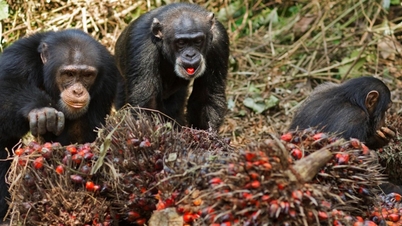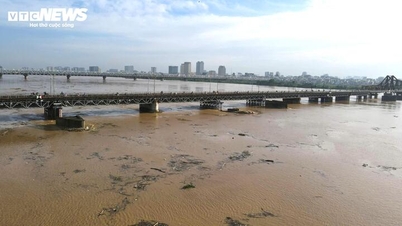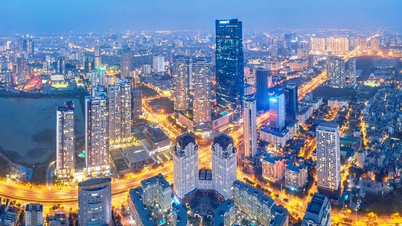Research from the University of Bristol shows that higher humidity reduces the rate at which sweat evaporates from the skin, contributing to the body's difficulty in dealing with heat stress.

Heat and high humidity have left Bangkok residents exhausted under the heat wave. Photo: Pavel V.Khon
This year, even before the Northern Hemisphere’s hot season began, temperature records were broken one after another. For example, April temperatures in Spain (38.8°C) were well above normal, even at the height of summer. South and Southeast Asia were particularly scorched by the heatwave. Countries like Vietnam and Thailand recorded their highest temperatures on record (44°C and 45°C). In Singapore, temperatures hit 37°C. In China, Shanghai experienced its highest May temperature in more than a century (36.7°C).
Climate change is making high temperatures more common, but heat waves can have very different effects depending on factors like humidity and how prepared a region is for heat waves. The recent heat wave in Southeast Asia may be remembered for its level of heat stress, the strain that heat puts on the body. Heat stress is primarily caused by temperature, but other weather-related factors like humidity, radiation, and wind are also important, according to Yahoo .
The human body absorbs heat from the surrounding air, from the Sun, or from processes such as digestion and exercise. To cope with this, the body needs to release some heat directly into the air and through breathing. But most of the heat is lost through sweating, because when sweat evaporates from the skin's surface, it takes energy from the skin and the air around the body in the form of latent heat.
Meteorological factors affect all of these processes. For example, lack of shade exposes the body to direct heat from sunlight, while higher humidity slows the evaporation rate of sweat from the skin. For this reason, the recent heat wave in Southeast Asia was so dangerous because this is an extremely humid part of the world .
Underlying health conditions and personal constitutions may make some people more susceptible to heat stress. However, heat stress can reach a point where even healthy and well-adapted people cannot survive even moderate exertion.
One way to measure heat stress is called wet bulb globe temperature (WBGT), which represents the heat stress an individual is exposed to. Scorching conditions equate to a temperature of approximately 39 degrees Celsius combined with 50% relative humidity. That limit is likely to have been exceeded in some places during the recent heatwave across Southeast Asia.
In less humid places further from the tropics, humidity is lower, resulting in lower WBGTs and much less danger. The April heatwave in Spain, with a maximum temperature of 38.8°C, had a WBGT of just 30°C. During the 2022 heatwave in the UK, temperatures exceeded 40°C, humidity was below 20% and WBGT was around 32°C.
Scientists at the University of Bristol, UK, used climate data to create a map showing heat stress around the world. The study highlighted the areas with the highest risk of exceeding the WBGT thresholds as hotspots including India, Pakistan, Southeast Asia, the Arabian Peninsula, equatorial Africa, equatorial South America and Australia. In these regions, the frequency of exceeding the heat stress threshold is increasing with global warming.
In fact, most people are inherently vulnerable to below the threshold of survival. That’s why we see large numbers of deaths during heat waves in cooler places. In addition, global analyses often fail to capture local extremes caused by microclimates. For example, a neighborhood in a city might retain heat more effectively than its surroundings, be ventilated by cool ocean breezes, or be in the “rain shadow” of a local hill, making it less humid.
Tropical regions typically see less variation in temperature. For example, Singapore lies almost on the equator and has a maximum temperature of around 32°C year-round, while London’s typical maximum temperature in mid-summer is just 24°C. However, London has recorded higher record temperatures (40°C compared to 37°C in Singapore).
Because regions such as Southeast Asia are known to experience high levels of heat stress, it is possible that populations are well adapted to cope with heat. Initial reports suggest that the high heat stress of the recent heatwave resulted in very few direct deaths. However, the number of deaths attributed to indirect causes is not yet well documented. Even without climate change, natural weather variability can produce heatwaves that break local records and even approach physiological limits.
An Khang (According to Yahoo )
Source link






![[Photo] Keep your warehouse safe in all situations](https://vphoto.vietnam.vn/thumb/1200x675/vietnam/resource/IMAGE/2025/10/1/3eb4eceafe68497989865e7faa4e4d0e)















![[Video] Hanoi continues to lead the country in innovation](https://vphoto.vietnam.vn/thumb/402x226/vietnam/resource/IMAGE/2025/10/2/6651caeab9a04120a7eb185da97226c8)
















![[Photo] President of the Cuban National Assembly visits President Ho Chi Minh's Mausoleum](https://vphoto.vietnam.vn/thumb/1200x675/vietnam/resource/IMAGE/2025/10/1/39f1142310fc4dae9e3de4fcc9ac2ed0)





























































Comment (0)